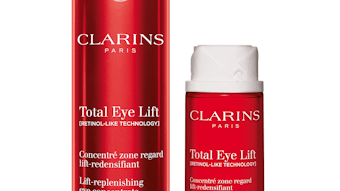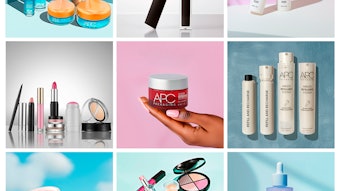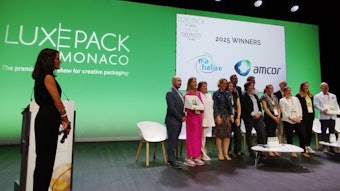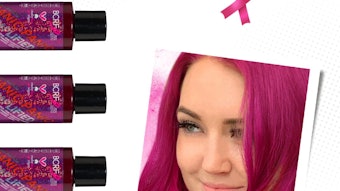- As beauty packaging as a whole becomes more elaborate with more value-added features, product packaging has to continually seek ways to be special and remain shelf standouts.
- Learning from your consumers, developing signature looks, creating tactile touch points, and developing and enhancing a product story with your packaging are all options for taking your beauty products to the next level.
- Don’t be afraid to think outside the box. Look to other industries and outlets for inspiration.
In today’s crowded marketplace, beauty product packaging has to be well-designed and well-developed in order to do its job of engaging the consumer from the shelf or web page—in addition, of course, to effectively containing and dispensing the product. And these days, every good beauty brand owner, marketer, manager and developer knows packaging requires its own strategy and structure, and can no longer just be a pretty box or jar.
But that’s just the problem—everyone knows this, so everyone is doing it. That extra attention to detail in packaging development may no longer be enough. Packaging needs to truly surprise and delight consumers, and give them another reason to pick up the product and come back for more. It needs to have an added value, and that value needs to be quickly apparent. The bottom line is it needs to be inspired.
Different Development
Creating something truly different has to have its roots somewhere, but often first attempts need to be honed and refined in order to meet the needs of demanding beauty consumers. That’s part of the reason anodized aluminum packaging specialist Anomatic Corporation revamped its development process. Describing it, Steve Rusch, director of marketing and business development for Anomatic, says, “We established a new facility last year that incorporates an innovation and design center, where we’ve added new technology, primarily for rapid prototyping. In doing so, [the new technology] really provides the opportunity for Anomatic to be able to produce [new packaging] concepts in a day.”
With a quick turnaround time for prototypes, beauty brand owners are able to work with Anomatic and their design and retail teams in real time to make tweaks and adjustments to meet a product’s needs. “For the brands, it’s revolutionary to be able to get a concept within a day or a week of dreaming something up, and putting it into stores so that they can respond to trends in the marketplace,” says Rusch. “They’re able to take that prototype and get instant feedback from their merchants, their design team and even in-store at the consumer level.
“We are in the process of restaging an entire product line, and it’s a very large product line, but we were essentially able to look at 30 different designs, produce samples and narrow it down to three in a matter of about 30 days by being able to put physical prototypes in the customers’ hands,” Rusch continues. “And that really enables them.”
In a society and industry that is increasingly relying on crowdsourcing, reviews and feedback to develop tailored products, this quick-prototype ability helps brands develop a package that truly hits the right notes with consumers at the right time.
Raising the Visual Bar
What is engaging to consumers today? More and more, beauty brands are seeking out packaging that attracts immediate attention yet also sticks in the mind. To create this type of consumer experience, collaboration and open-mindedness is more important than ever.
Illustrating this point, Beth Scherer, director of sustainability with Curtis Packaging, says, “The most exciting and collaborative innovation we’ve worked on in the past year or so is probably for the Beyoncé Pulse line for Coty. For this project, Beyoncé and Coty wanted something that looked really ‘plugged in.’ Curtis partnered with Hazen Paper to create a registered holographic carton that is incredibly dynamic and looks alive from every angle. The placement of the 3-D burst hologram is consistent from carton to carton and is layered with transparent inks to create the final effect. It allows designers to add eye-catching movement behind their designs and create a unique experience for consumers.”
And to ensure its customers’ needs were being appropriately met, Curtis worked directly with Coty on the project, Scherer explains. “Coty really wanted to come up with something that hadn’t been done before, so they actually developed the graphics first, and then Curtis and Hazen Paper worked together to develop a hologram that really highlighted the design,” she says. “We came up with several possibilities, and Coty ultimately opted for the sharp, electrifying burst you see on the packaging today.”
This kind of unique, engaging packaging experience is necessary to catch attention as well as ensure the line and any subsequent related products marry well together while still displaying their own personality. Of the Pulse design, Scherer notes, “[The design and packaging] is absolutely unique to the Pulse line, and is therefore easily branded and instantly identifiable. Beyoncé has launched two new products since the original Pulse (a Summer Edition and NYC), both of which use the same background hologram with different colors layered on top to create a simultaneously completely new and familiar experience for consumers.” And this helps reinforce the important brand-consumer connection.
To help this type of connection, packaging is now more often used to extend or even create a product story for a piece. For the limited edition Nina Fantasy fragrance from Nina Ricci, SGD dipped into a fairy tale narrative to help the scent follow all the signals of a distinct experience.
Sheherazade Chamlou, vice president of sales and marketing, perfume division for SGD North America, describes the product’s packaging, explaining that SGD used “a new, innovative finishing technique to decorate the limited edition of Nina Fantasy, a fairy-tale reinterpretation of the apple bottle. Nina Fantasy speaks of an imaginative dream world. The heroine is a young woman dressed and made up in Kawaii style singing as she strolls through the woods. The bottle is a white apple adorned with charming pink and gold patterns expressing an imaginary world.”
To help create that imaginary world, SGD had to figure how to navigate some tight packaging corners. “The challenge was to decorate and perfectly register the graphics on this bottle, which has a curvy and concave surface,” says Chamlou. “The decoration process is known as hot transfer, and it offers a better quality and greater precision [than other options]. This technique consists of applying a film in a one-pass machine to deposit ink on areas that cannot be decorated by silk screen.”
And the result truly offers a supporting piece of the fantasy to consumers. “Nina Fantasy is a colorful olfactory dream, and the pretty bottle is very whimsical and feminine—definitely a collector’s favorite,” Chamlou says.
That idea of telling a story with a product’s packaging is almost taken to its zenith with the Floral Curiosities Botanists Travel Sprays from Ineke, a perfume creation company based in San Francisco. “The idea for the Floral Curiosities Botanists Travel Sprays was inspired by the various books I have on flowers and perfume,” explains Ineke Rühland, perfumer and creative director with the company. “We imagined seeing a collection of books telling a story about each soliflore fragrance (i.e., Angel’s Trumpet, Poet’s Jasmine, Scarlet Larkspur and Sweet William). We were so inspired that we actually photographed real book ends in the San Francisco public library so the edges of the books looked very realistic.”
Of course, Rühland explains, this project also required collaboration. “Conceptually, it wasn’t difficult, but from an implementation viewpoint, we worked closely with Bill Omelia from Knollpack, who helped guide us—taking our idea and making it into production at a reasonable price,” she says. “The design was our own, and we worked closely with a local graphic artist Tracy Sunrize Johnson and one we discovered through crowdspring.com, Dragan Loncar, to develop the right look.”
The result is a set of fragrances that also can be used as decor. “Consumers love them and like to collect the full set,” Rühland comments. “And the only issue was that [the book packages] sometimes look too realistic, so we developed a point-of-sale display that features bookends with spaces for testers.”
By developing this innovative packaging idea, Ineke was able to further build out the story of its Floral Curiosities Botanists collection, inspiring consumers and building its connection even more strongly.
Tactile Connections
The use of sensory elements in products is another strong connection point receiving a lot of attention, and packaging offers the distinct opportunity for a better tactile experience. Beauty products are so personal, the touch needs to be as engaging—if not more so—than the visual.
Scherer notes that Curtis Packaging’s new Curtis Coatography aims to capitalize on this trend. “The first product in this line, Coatography Gloss, allows brands to achieve an undulating landscape of tactile coating, allowing them to distinguish themselves with both the visual and tactile aspects of their packaging,” she explains. “Customers are engaged on two levels with two powerful senses—sight and touch. And there is no end to the intricacy of the designs we can produce. You really have to see it and feel it to truly appreciate the impact.”
This kind of technology allows for more involved, interesting ideas, as well. “We’re constantly testing new applications based on our customers’ ideas, and some of our own,” says Scherer. “It’s a really collaborative environment, and we’re constantly testing the limits of what we’re able to achieve. In addition to the current innovation, we’re planning to expand the line to include glitter, spot lenticular that doesn’t require lamination, and spot flocking. Our offerings at the moment are just the tip of the iceberg.”
Tactile packaging also can have a very specific, necessary use, as bath and body care brand Cleanlogic discovered. “Cleanlogic started with just under 10 SKUs, and the focus of the packaging was to create a clean but elegant look. This was achieved with minimalist typeface and metallic silver packaging,” explains John Arabanos, manager of marketing and communications of IMS Trading, LLC, for Cleanlogic.
But an innovative idea that developed as the brand grew really aimed to set it apart. “As our line increased in SKU count, so came the inclusion of braille,” Arabanos says. “After the inclusion of braille on a select group of products was met with great support at a bath accessories trade show, it was decided that braille should be a signature of all Cleanlogic products.”
Arabanos explains that the inspiration behind the braille on the packaging was from Cleanlogic’s CEO Isaac Shapiro. “His mother had been blind since the age of seven, and had been a huge advocate in the blind community. She worked with blindness and visual impairment support groups to help people to achieve more in life and be competitive in the job market [and] in order to live more independently,” Arabanos says. “Shapiro decided, as a continuation of the work of his mother, he would include braille (an unmistakable mark associated with blindness) on the packaging of his company’s product.”
To create the braille-included packaging, Arabanos says the company’s COO Michael Ghesser led the project. “With the help of our sourcing contacts, [Ghesser] works hand in hand with suppliers and factories overseas to ensure packaging quality is top notch and the braille is legible. Our braille is proofread by Isaac’s mother, who provides feedback on the relief of the dots, spacing and other factors that the sighted community might not otherwise notice as important,” he notes.
Clearly, this packaging decision helps say legions about the Cleanlogic brand and its mission. “Braille is an instant signal of our commitment to the blind and visually impaired, and the ability to really feel the difference by touching the dots is a great sensory tool that helps us to differentiate our products from the rest,” says Arabanos. “[Bathing] is something we all do, so why not extend the value of your everyday ritual to provide support to individuals who are not so different from you and I?”
Repurposing
Getting the innovative ideas for inspired packaging choices obviously can strike from anywhere. But sometimes, you only need to look at something in a new light in order to have that light bulb moment of genius.
“In addition to [Anomatic’s] new innovation center, we also have a design room where we feature products from all of the different industries that we’ve serviced throughout our 50-year history,” says Rusch of the company’s ability to help develop and inspire new packaging ideas. “Having this design center is often the catalyst to start the design conversation. A lot of times it’s giving designers the ability to go in a room and just look at everything and kind of get a feel for what truly is possible.”
Taking ideas from other industries is one way Printex Packaging found success with its Snap Cap package, which was used for personal lubricant lotion Simply Slick. “The original development came from a need presented by a large instant beverage manufacturer, but the consumer testing went for a flexible pouch instead,” explains Charles W. Hays, vice president of sales and marketing with Printex. “We decided to show the samples of this package at a couple of trade shows and had a favorable response. So from this we decided to make our own samples for marketing purposes and test the water further.”
Through this water-testing, Printex found the Simply Slick brand was interested in the design. “It was looking to make its product have a bigger presence on the shelf and really show off the brand logo via graphics and forming-on caps,” Hays says, and the Snap Cap package fit the brand’s needs.
From there, Printex looked to reach out to different industries more often. “Today, we are working on a half dozen projects that have called out this design, and the products are coming from a wide spectrum of consumer goods manufacturers,” Hays notes.
You never know where inspiration is going to strike, but when it does, brand owners and developers need the courage and foresight to follow through. Take advantage of industry collaborators and designers. Don’t be afraid to make mistakes. And always keep your eyes open for that new idea on the horizon.









